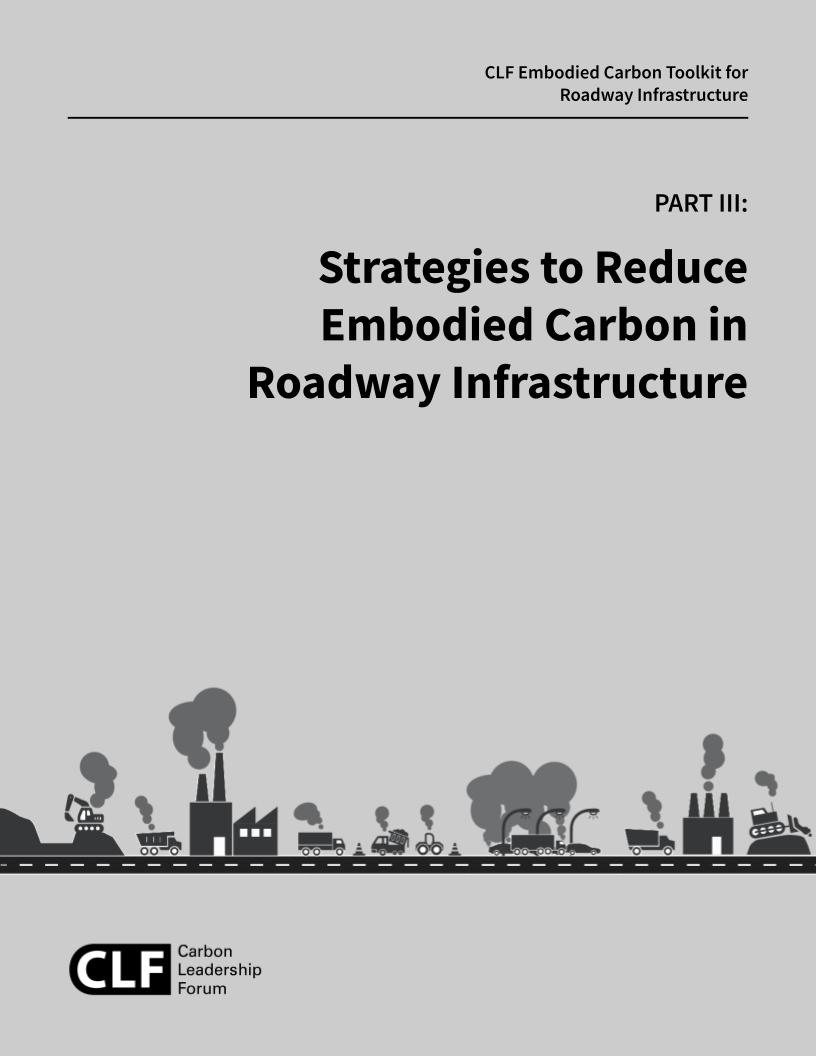Roadway infrastructure results in significant greenhouse gas emissions released due to the extraction and manufacturing of materials and all other process necessary to build and maintain it – also known as embodied carbon. Once identified and quantified, strategies need to be developed in order to reduce embodied carbon emissions from emitting sources.
Carbon Reduction Strategies
Parts 1 and 2 of this Toolkit defined embodied carbon and its accounting method in the context of roadway infrastructure, respectively. This part of the Toolkit provides an overview of strategies for reducing embodied carbon in roadways.
Existing and proposed roadway carbon reduction strategies are broken into several broad categories here:
- Project design and delivery strategies: Early design and planning decisions at project level that prioritize carbon reduction -among other sustainability metrics- as a goal.
- Specifications, contracting, and procurement strategies: Stakeholder level strategies that encourage, incentivize, or mandate the use of low carbon materials.
- Emissions reduction strategies categorized according to LCA stage:
- Material production strategies (A1-A3): Practices to extract, manufacture, and produce materials with lower upstream embodied carbon.
- Construction activities strategies (A4-A5): Practices that reduce fossil fuel consumption from on and off road equipment and improve construction quality.
- Use phase and end-of-life strategies (B and C): Practices that maintain roadway performance during lifecycle and sustainable waste management practices.
Autores:
Milad Ashtiani, Meghan Lewis, Brook Waldman, and Kate Simonen
Publicado: February 2024
Derechos de autor
Creative Commons Attribution
4.0 International License.
© Carbon Leadership Forum 2024
